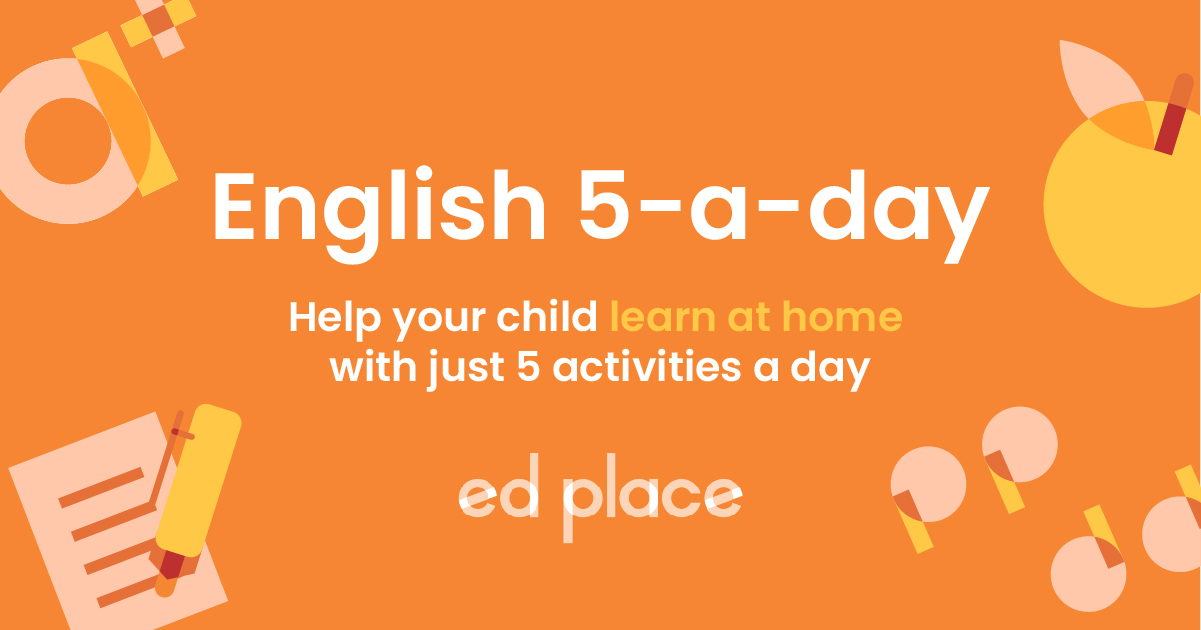
EdPlace's Year 2 Home Learning KS2 English Lesson: Sentence Types
Looking for short lessons to keep your child engaged and learning? Our experienced team of teachers have created English, maths and science lessons for the home, so your child can learn no matter where they are. And, as all activities are self-marked, you really can encourage your child to be an independent learner. Get them started on the lesson below and then jump into our teacher-created activities to practice what they've learnt. We've recommended five to ensure they feel secure in their knowledge - 5-a-day helps keeps the learning loss at bay (or so we think!). Are they keen to start practising straight away? Head to the bottom of the page to find the activities.
Now...onto the lesson!
Punctuation is key!
As adults, we read and write lots of different sentence types without thinking about them, but children need to understand the differences to help them with their understanding of what they are reading. Understanding sentence types also help children with their writing and how to punctuate their sentences – so it really is important stuff! Feeling a bit confused about how to explain to your child the four different sentence types and how to use them? Fear not.
We’re confident that by the end of this guide your child will be able to:
1) Understand what the four different sentence types are
2) Apply this knowledge in their reading and writing
3) Explain their understanding back to you
Step 1: Vocabulary check!
Before we look at how and when to use each sentence type, it’s important to check your child understands the key language we will be using.
1. Sentence - a group of words that begin with a capital letter and end with a punctuation mark.
2. Punctuation - used to separate sentences and clarify meaning. Common punctuation marks are full stops (.), capital letters (?), exclamation marks (!) and commas (,).
Step 2: So, what does your child already know about sentence types?
By now, your child has probably come across all the different sentence types, but may not know how to recognise their differences or yet be able to write or punctuate them correctly.
They are becoming probably familiar with using full stops, question marks and exclamation marks at the end of their sentences, and will know how important it is to begin every sentence with a capital letter. Why not ask them what they can tell you about this subject? They may surprise you!
Step 3: What's next?
There are four different sentence types, let’s look at each one with examples.
Statement
What is it? A sentence that gives us information.
Punctuation used? Usually ends with a full stop. Can sometimes end with an exclamation mark.
Examples: The grass is green. I like your new dress. I am going to the shops tomorrow.
Question
What is it? A sentence which asks something.
Punctuation used? Must always end with a question mark '?'.
Examples: What colour is the grass? How are you today? Would you like to come to the park with me?
Exclamation
What is it? A sentence which shows strong emotion. It must begin with ‘how’ or ‘what’.
Punctuation used? Ends with an exclamation mark ‘!’.
Example: What wonderful green grass! What big teeth you have! How kind you are!
Command
What is it? A sentence which tells you what to do. They usually begin with a verb (a doing word, e.g. ‘go, sit, wash, cut).
Punctuation used? Ends with a full stop or an exclamation mark.
Example: Go and cut the grass. Eat all of your dinner up, please. Run faster! Chop the carrots carefully.
Step 4: Putting it into practise...
It’s always a good idea to practise new skills to assess your child’s understanding. Why not have a go at some reading and writing practise together?
First, read these sentences and decide which sentence type they are, talking about how you know:
1) How are you feeling today?
2) Go to your room!
3) What a beautiful day!
4) Put the teabag in the cup and stir it gently.
5) My cat’s name is Marley.
6) Would you like some breakfast?
Now, could you use this picture to help you think of four sentences, using each sentence type?

Examples you could have chosen:
Statement:
The horse is brown and has a black tail.
Question:
Do you like horses?
Command:
Climb on the horse.
Exclamation:
What a beautiful horse!
Step 5: Activity Time!
Hopefully, your child is feeling more confident about understanding and explaining the four different sentence types now. Keep practising these new skills by having a go at the following activities!
All activities are created by teachers and automatically marked. Plus, with an EdPlace subscription, we can automatically progress your child at a level that's right for them. Sending you progress reports along the way so you can track and measure progress, together - brilliant!
Activity 1 - Revise Capital Letters in Sentences 1
Activity 2 - Sentence Forms: Statement, Question and Command
Activity 3 - Change Statements into Questions 1
Activity 4 - Change Statements into Questions 2
Activity 5 - Punctuation: Statements and Questions
Answers:
1. Question
2. Command
3. Exclamation
4. Command
5. Statement
6. Questions








